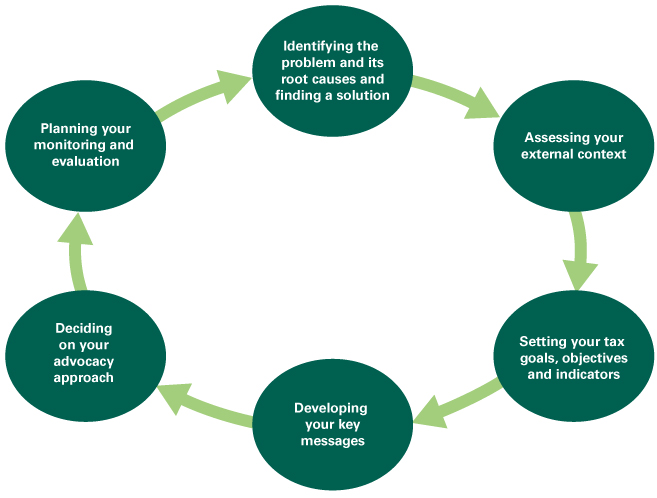’One of the most common mistakes campaigners make is to fall into the activity trap. One goes straight from good intentions into full activity mode – with or without activity plans. The result is often misused resources, frustration and, ultimately, failure… by pausing a little and doing some homework on strategy, campaigners can have a much better chance of channelling their resources towards the outcomes they are after.’
What is advocacy?
Advocacy is a term used to encompass a number of activities which organisations or individuals can take to exert pressure for change in a specific policy or behaviour of a government, institution, organisation (for example the International Monetary Fund (IMF) or World Bank) or possibly a single individual (for example a business leader or city mayor). Advocacy can be a social change process that influences attitudes, social relationships and power relations, and that strengthens civil society and opens updemocratic spaces.
Ultimately, advocacy seeks to address the underlying causes of a problem, to remove the obstacles to arriving at the solution and to successfully influence agendas to achieve the desired change. Advocacy for tax justice could be an important element in achieving wider changes related to poverty reduction, development and social justice.
Advocacy can include research and policy analysis, lobbying, media work and campaigning.
The advocacy planning cycle – developing your advocacy strategy
Your advocacy is likely to have more impact if you have a systematic advocacy strategy, which involves properly researching the issues; analysing the political context; identifying targets, opponents, allies and desired outcomes; and that is clear about the key messages it wishes to get across and the changes it is seeking.
Advocacy plans must remain flexible to respond to an ever-changing political environment, new learning, and new political opportunities or threats. Your strategy should never be set in stone. Different steps will need to be revisited at different times. It’s a question of strategy and tactics!
Be aware that advocacy can sometimes take a long time to get results – just think of how long it took for the anti-apartheid movement to achieve change in South Africa – so be prepared for the long haul while hoping that success may come sooner than you think.
This chapter will take you step by step through the development of an advocacy strategy. We walk you through six steps, but of course the sequencing of these steps is not fixed. You may sometimes want to change the order, depending on what works for you and your context.
You can find an ‘advocacy strategy template’ at the end of this chapter (Appendix 1).
